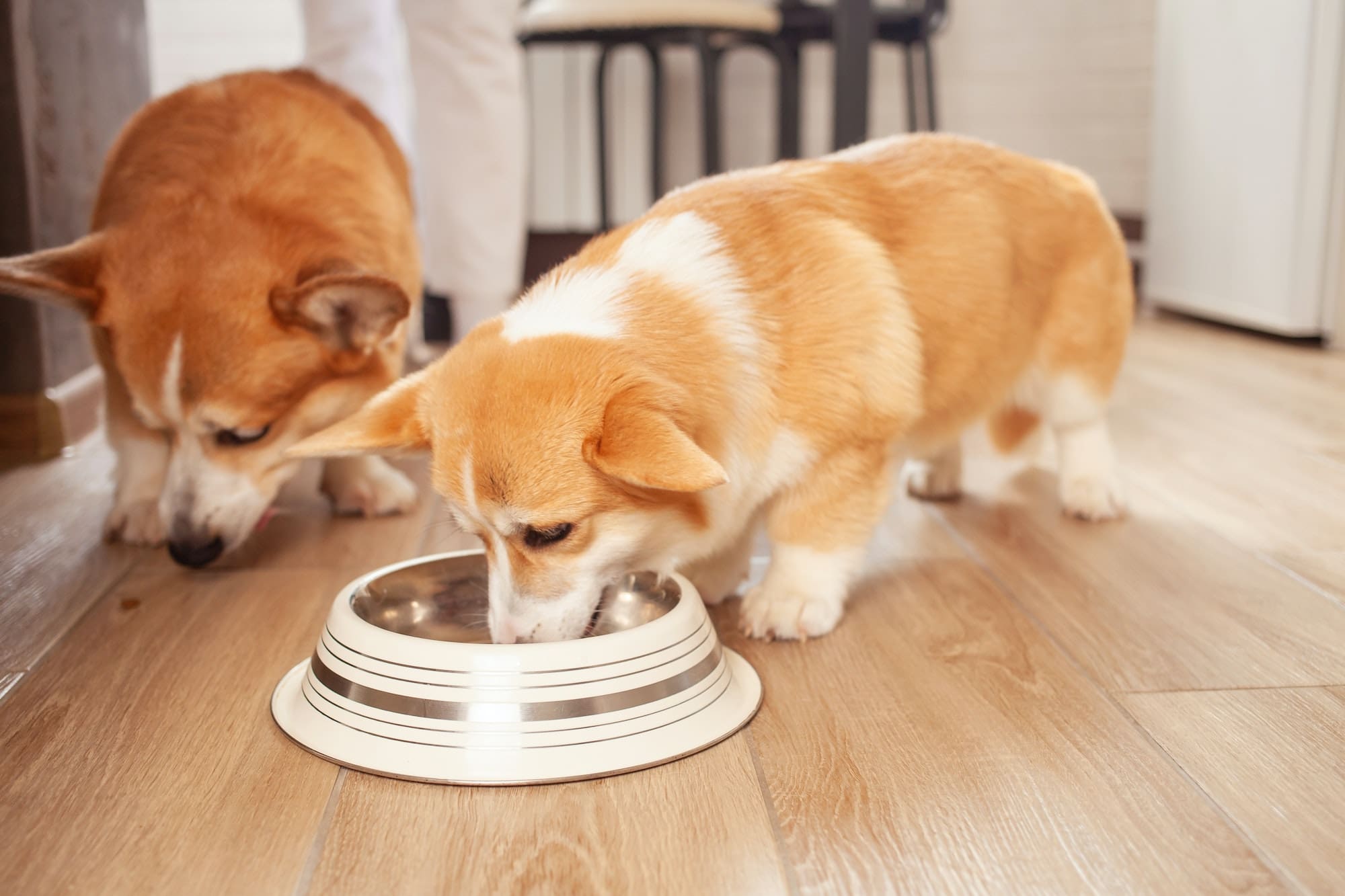If you've recently welcomed a 1-month-old puppy into your home, you may be wondering how often you should be feeding them. Finding the right balance is key to ensuring your furry friend grows up healthy and happy. In this article, we'll explore the feeding schedule recommended for a 1-month-old puppy, including the recommended number of meals and portion sizes. By understanding their nutritional needs at this stage, you'll be able to provide your adorable pup with the nourishment they need to thrive. So, let's dive in and get started!
Introduction
Feeding your 1-month-old puppy properly is crucial for their growth and development. During this early stage of their life, puppies require a diet that provides them with all the necessary nutrients to support their rapidly growing bodies. Establishing a feeding schedule, determining the frequency of feeding, and understanding portion sizes are all important factors to consider. In this article, we will guide you through the process of feeding your 1-month-old puppy, taking into account their breed, overall health, and individual appetite. We will also provide guidelines and techniques for feeding, discuss the transition to solid food, and highlight special considerations for small and large breeds. Lastly, we will cover the importance of monitoring the puppy's growth and development, and common feeding mistakes to avoid.
Determining the feeding schedule
Consulting the breeder or veterinarian
When determining the feeding schedule for your 1-month-old puppy, it is always advisable to consult with the breeder or veterinarian who has been caring for them. They will have valuable insights into the puppy's previous feeding routine and can provide guidance based on their specific needs. Additionally, they may have specific recommendations based on the breed or any underlying health conditions that need to be taken into account.
Taking into consideration the puppy's breed
Different breeds may have different nutritional requirements and growth rates. Some breeds may require more frequent feeding due to their small size or higher energy levels, while others may be fine with less frequent meals. Understanding your puppy's breed characteristics and consulting with a professional can help you determine the best feeding schedule that meets their specific needs.
Evaluating the puppy's overall health
The overall health of your 1-month-old puppy should also be taken into consideration when determining the feeding schedule. If your puppy has any underlying health issues or is recovering from an illness or surgery, they may require more frequent or smaller meals to aid in their recovery. It is important to monitor their appetite and behavior to ensure they are receiving the right amount of food to support their healing process.
Observing the puppy's appetite and behavior
Puppies, like humans, have unique appetites and behaviors that can indicate their feeding needs. Observing how your 1-month-old puppy reacts to mealtime can provide valuable information on the frequency and portion sizes that work best for them. If they are eager and finish their meal quickly, it may indicate that they require more frequent feedings. Alternatively, if they are disinterested in food or leave food behind, it may indicate they are being fed too frequently or receiving portion sizes that are too large.
Frequency of feeding
Feeding every 2 hours
For very young puppies, such as 1-month-olds, feeding every 2 hours may be necessary to ensure they receive enough nutrition and maintain their energy levels. This frequent feeding helps mimic the natural feeding patterns they would experience with their mother. It is important to note that this frequency may not be feasible for everyone due to work or personal commitments. In such cases, alternative feeding schedules can be adopted while keeping the puppy's needs in mind.
Feeding every 3 hours
As your 1-month-old puppy grows and develops, they may be able to go slightly longer between feedings. Feeding every 3 hours can be a suitable option, providing adequate nourishment while allowing for more flexibility in your daily routine. However, it is essential to pay attention to your puppy's behavior and adjust the feeding schedule accordingly if they exhibit signs of hunger or distress.
Feeding every 4 hours
By the time your puppy reaches 1 month of age, they may start showing more independence and may not require feeding as frequently. Feeding every 4 hours can be a reasonable schedule at this stage, ensuring they receive the necessary nutrition without overwhelming their stomach with frequent meals. It is important to monitor the puppy's response and adjust the schedule as needed.
Feeding every 5 hours
As your 1-month-old puppy continues to grow, they should be able to tolerate longer gaps between meals. Feeding every 5 hours can be a suitable schedule for many puppies at this age. It provides them with the necessary nutrition while allowing for more flexibility in your daily routine. However, as always, it is crucial to evaluate the puppy's appetite and behavior to ensure they are receiving enough food to support their growth and development.
Feeding during the day and night
It is important to note that puppies have smaller stomachs and higher metabolic rates, which require them to eat more frequently than adult dogs. Therefore, regardless of the chosen feeding schedule, it is advisable to provide your 1-month-old puppy with small meals throughout the day and night to ensure they receive sufficient nutrition. This may involve setting an alarm to wake up during the night for a feeding. While it may be challenging at times, remember that these small sacrifices will contribute to the health and well-being of your growing puppy.
Portion sizes
Using a puppy feeding chart
A puppy feeding chart can serve as a helpful reference for determining the appropriate portion sizes for your 1-month-old puppy. These charts are typically based on the puppy's age, weight, and breed. They provide a general guideline for the amount of food to be given at each feeding, taking into consideration the specific nutritional needs of puppies at different stages of growth. However, it is important to remember that each puppy is unique, and adjustments may need to be made based on their individual appetite and body condition.
Considering the puppy's weight and size
The weight and size of your 1-month-old puppy play a significant role in determining their portion sizes. Larger puppies may require more food to fuel their growth and meet their energy needs, while smaller puppies may require smaller portions. Regularly monitoring your puppy's weight and consulting with your veterinarian can help ensure that you are providing appropriate portion sizes that support their individual growth and development.
Monitoring the puppy's weight gain
Monitoring the puppy's weight gain is key in determining whether the portion sizes provided are appropriate. A healthy growing puppy should gain weight steadily without becoming overly overweight or underweight. Regular weigh-ins, accompanied by veterinary advice, can help ensure that the puppy's portion sizes are adjusted according to their changing nutritional needs.
Adjusting the portions as needed
It is important to remember that the portion sizes recommended by feeding charts or professionals are guidelines and may need to be adjusted to meet the specific needs of your 1-month-old puppy. Monitoring their appetite, behavior, and weight gain will give you valuable insights into whether the current portion sizes are suitable. If your puppy consistently leaves food behind or shows signs of hunger between meals, it may be an indication that the portions need to be increased. Conversely, if they regularly overeat or become overweight, it may be necessary to reduce the portion sizes.
Feeding guidelines and techniques
Bottle-feeding
In some cases, such as when the puppy has been separated from their mother or is unable to nurse, bottle-feeding may be necessary. When bottle-feeding your 1-month-old puppy, it is important to use a puppy milk replacement formula specifically designed for their nutritional needs. Follow the instructions provided by the manufacturer to prepare the formula and use a small bottle with an appropriately sized nipple to allow the puppy to feed comfortably. Bottle-feeding allows for more control over portion sizes and provides an opportunity for bonding with your puppy.
Providing a suitable feeding environment
Creating a suitable feeding environment is essential for your 1-month-old puppy's mealtime experience. Choose a designated area where the puppy can eat without distractions or disruptions. This will help them focus on their food and develop good eating habits. Ensure that the area is clean and free of any potential hazards or contaminations that could harm the puppy or their food.
Feeding in a calm and quiet area
Puppies, especially at a young age, can easily become overwhelmed by noise and distractions. Therefore, it is beneficial to feed your 1-month-old puppy in a calm and quiet area of your home. This will help reduce stress and create a peaceful atmosphere for them to enjoy their meal. Minimizing external stimuli during feeding time can also prevent behavioral issues associated with food aggression or anxiety.
Stimulating the puppy to eat
Some puppies may require additional encouragement or stimulation to eat, especially if they are reluctant or disinterested in their food. Offering praise, gently stroking their back, or even engaging in gentle play before or after mealtime can help stimulate their appetite and make the feeding experience more enjoyable for them. However, it is important not to force the puppy to eat, as it can lead to aversions or negative associations with food.
Cleaning the feeding utensils
Proper hygiene is crucial when feeding your 1-month-old puppy. Feeding utensils, such as bottles, nipples, and bowls, should be cleaned thoroughly before each use to prevent bacterial growth and potential health issues. Wash the utensils with warm soapy water, ensuring they are rinsed well and completely dry before use. In some cases, you may also choose to sterilize the feeding utensils to ensure maximum cleanliness.
Transitioning to solid food
Introduction of solid food
Around 1 month of age, your puppy may begin showing interest in solid food and may be ready to start the transition from milk to solid food. This process should be gradual to allow the puppy's digestive system to adjust. Start by introducing small amounts of high-quality puppy food that is specifically formulated for their nutritional needs. Mix the solid food with a puppy milk replacement formula or water to create a soft consistency that is easier for the puppy to eat.
Choosing the right puppy food
Choosing the right puppy food is crucial for your 1-month-old puppy's health and growth. Look for high-quality commercial puppy food that is specifically formulated for their age and breed. These foods are designed to provide the necessary nutrients, including proteins, fats, carbohydrates, vitamins, and minerals, that are essential for their development. Avoid feeding your puppy adult dog food or foods that are not specifically labeled for puppies, as they may not meet their unique nutritional requirements.
Gradual transition process
When transitioning your 1-month-old puppy to solid food, it is important to do so gradually to prevent digestive upset. Start by replacing a small portion of the milk with the solid food mixture at each feeding. Over the course of several days or weeks, gradually increase the proportion of solid food while reducing the amount of milk or formula. This gradual transition allows the puppy's digestive system to adapt to the new food and ensures a smooth transition to a solid diet.
Monitoring the puppy's response
Throughout the transition process, it is important to monitor your 1-month-old puppy's response to the solid food. Observe their appetite, digestion, and overall well-being. If the puppy experiences any digestive issues, such as diarrhea or vomiting, it may be an indication that the transition is too rapid or that the chosen food does not agree with their system. In such cases, consult with your veterinarian for guidance on how to adjust the transition process or select a different type of food.
Special considerations for small and large breeds
Smaller breed puppies
Smaller breed puppies, such as Chihuahuas or Yorkshire Terriers, have unique nutritional needs due to their size and higher metabolic rates. They may require more frequent feedings and smaller portion sizes compared to larger breeds. It is important to choose a puppy food that is specifically formulated for small breeds to ensure they receive the appropriate balance of nutrients. Regular monitoring of their weight and consultation with your veterinarian can help ensure that their specific needs are being met.
Larger breed puppies
Larger breed puppies, such as Labrador Retrievers or Great Danes, have different growth rates and nutritional requirements compared to smaller breeds. They may require larger portion sizes and less frequent feedings to support their rapid growth. It is important to choose a puppy food that is specifically formulated for large breeds, ensuring the appropriate balance of nutrients to support their growing bones and muscles. Consult with your veterinarian for guidance on the best feeding schedule and portion sizes for your larger breed puppy.
Monitoring the puppy's growth and development
Regular weigh-ins
Regular weigh-ins can provide valuable insights into your 1-month-old puppy's growth and development. Weighing them every week or two can help ensure that they are gaining weight at a healthy rate and that the feeding schedule and portion sizes are appropriate. Sudden changes in weight, either significant gains or losses, should be discussed with your veterinarian, as they could be indicators of underlying health issues.
Observation of physical and behavioral changes
In addition to regular weigh-ins, observing your 1-month-old puppy for physical and behavioral changes is essential. Changes in coat condition, energy levels, appetite, and overall behavior can indicate whether the current feeding schedule and portion sizes are meeting their needs. Address any concerns or abnormalities with your veterinarian to ensure that your puppy remains healthy and receives appropriate care.
Consulting the veterinarian for advice
Your veterinarian is a valuable source of information and guidance when it comes to your 1-month-old puppy's feeding schedule and overall care. They have in-depth knowledge of your puppy's health history and can provide personalized recommendations based on their breed, size, and specific needs. Regular check-ups and consultations with your veterinarian will help ensure that your puppy's growth and development are on track and that any necessary adjustments to their feeding plan are made.
Common feeding mistakes to avoid
Overfeeding or underfeeding
One of the most common feeding mistakes is overfeeding or underfeeding your 1-month-old puppy. Overfeeding can lead to excessive weight gain, putting strain on their developing joints and increasing the risk of obesity-related health issues later in life. Underfeeding, on the other hand, can lead to stunted growth and nutrient deficiencies. It is important to follow the recommended portion sizes and make adjustments based on your puppy's individual needs and growth rate.
Feeding inappropriate food
Feeding your 1-month-old puppy inappropriate food can have detrimental effects on their health. Human food, especially those that are high in fat, sugar, or spices, should be avoided as they can upset the puppy's delicate digestive system and lead to nutritional imbalances. Additionally, feeding adult dog food or food that is not specifically formulated for puppies can result in nutritional deficiencies or excesses. Choose a high-quality puppy food that meets the nutritional requirements for growth and development.
Feeding at irregular intervals
Maintaining a consistent feeding schedule is important for your 1-month-old puppy. Feeding at irregular intervals can disrupt their digestive system, leading to gastrointestinal upset or inconsistent growth. Stick to a regular schedule that suits your puppy's needs and lifestyle, providing them with small meals at appropriate intervals throughout the day and night.
Inconsistency in feeding routine
Being inconsistent with your 1-month-old puppy's feeding routine can create confusion and may lead to behavioral issues or difficulties in training. Set aside specific times for feeding each day and ensure that everyone in the household follows the same schedule. Consistency in routine helps establish a sense of security for the puppy and promotes healthy eating habits.
Conclusion
Feeding your 1-month-old puppy requires careful consideration of their breed, overall health, appetite, and individual needs. Determining the appropriate feeding schedule, portion sizes, and transitioning to solid food are all crucial aspects of their growth and development. By consulting with professionals, monitoring your puppy's appetite and behavior, and making adjustments as needed, you can ensure that they receive the right nutrition to support their overall health and well-being. Remember to regularly consult with your veterinarian and avoid common feeding mistakes to provide the best care possible for your 1-month-old puppy.






